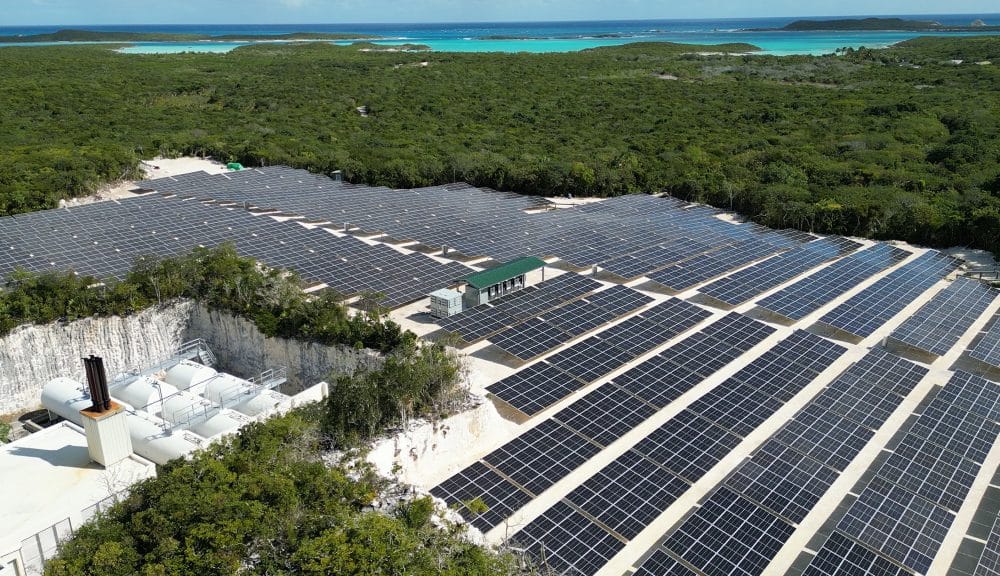
Only rails remain after modules are safely removed from a rooftop array. Many municipalities in Northeastern states have started implementing regulations for decommissioning solar projects, sometimes requiring developers to pack-in teardown costs in the total cost. HelioPower
More than two-thirds of the country has state requirements for decommissioning end-stage renewable energy projects, according to a new report released today by law firm Lewis Roca. The report, “State Requirements For Decommissioning End-Stage Renewable Energy Projects,” is a legal analysis that compiles and assesses renewable energy decommissioning requirements on a state-by-state basis.
Utility-scale wind and solar power projects were first developed in the United States in the early 1980s. Now more than 40 years later, early generation renewable projects have begun to reach the end of their useful lives. This report outlines the current statutes and/or regulatory codes regarding decommissioning requirements for each party involved in constructing and operating a wind or solar energy facility, including landowners, lessees, municipalities and state governments. It also details common decommissioning requirements found in state statutes and codes.
“In recent years, state legislatures have begun to impose specific decommissioning requirements for existing and new renewable energy projects, recognizing the need for formal rules and regulations in an industry that has grown exponentially over the last 40 years,” said Tom Dougherty, partner at Lewis Roca, co-lead of the firm’s Renewable Energy End-of-Life Planning Group and co-author of the report. “It is important for industry participants to be aware of the existing and upcoming regulatory requirements to ensure they avoid costly missteps, while also reaping all potential rewards of end-of-life planning.”
State and local governments’ experiences with the oil and gas industry are informing aspects of their approaches to renewable energy end-of-life and decommissioning regulations. States have consistently demonstrated an interest in ensuring project applicants have effective and responsible project decommissioning plans, reasonable estimates of the costs associated with decommissioning, and the financial capability to implement the decommissioning plan.
“Some states focus exclusively on financial assurance requirements to ensure that end-of-life obligations are funded, while others also mandate specific regulatory standards for decommissioning efforts,” said Dietrich Hoefner, partner at Lewis Roca, co-lead of the firm’s Renewable Energy End-of-Life Planning Group and co-author of the report. “Some states require the submission of detailed decommissioning plans, some provide for government monitoring and approval of decommissioning efforts and some focus heavily on land reclamation.”
Key findings and statistics found in the report include:
- Popular decommissioning requirements imposed by states, such as:
- The development (and updating) of decommissioning plans;
- Land restoration requirements; and
- Bonding requirements to ensure the payment of decommissioning.
- Of the 36 states with available information on statutes, pending legislation, or regulations that address the decommissioning:
- 20 have decommissioning legislation mentioning solar and wind;
- Nine have decommissioning legislation mentioning only solar;
- Four have decommissioning legislation mentioning only wind; and
- Three either have made no specific mention of wind or solar, have pending legislation, or allow counties to address the topic.
- Iowa and Kansas — two states that rank among the Top 10 in renewable energy production — have no decommissioning legislation.
News item from Lewis Roca




